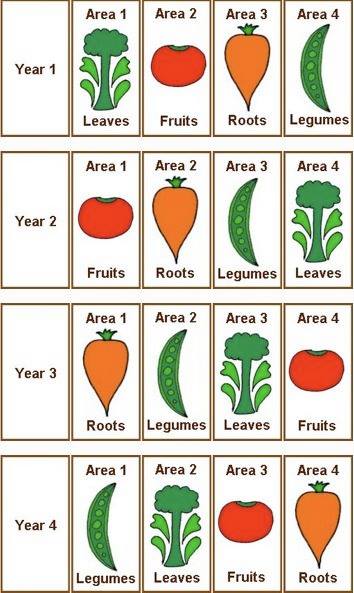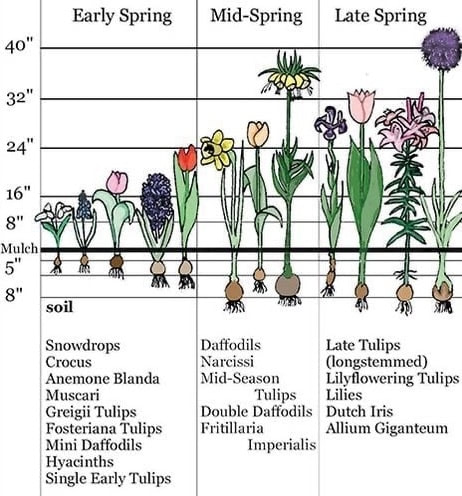Gardening for PollinatorsPollination is the process by which pollen is transferred from the anther (male part) to the stigma (female part) of the flower and a seed is formed. Seeds can only be produced when pollen is transferred between flowers of the same species.
Pollination is a crucial process for seeds to form and new plants to develop. Some plants depend on the wind or the rain for pollination, but the majority of plants depend on animals to pollinate; usually insects such as ants, bats, bees, beetles, birds, butterflies, flies, moths, wasps, etc. Without pollination, countless plants would not set seeds or produce fruits. The interrelationship between animals and plants is simple; animals provide the mobility and delivery of the pollen that is required for plant pollination, and plants offer animals food in form of nectar, pollen, resin, oils, flowers and sometimes, the plants themselves. Plants lure pollinators with flowers that have specific shapes, vibrant colors and distinct scents. Pollinators make sure we can enjoy beautiful flowers, pleasing scents and delicious fruits. Plants are essential in the production of medicine, fiber, fuel, shelter, and furniture. They also support wildlife, prevent soil erosion, improve aesthetics and mitigate air pollution. In order to survive, animals (including humans) depend on plants or on animals that feed on plants. Throughout plant evolution, plants have developed ways to avoid self-pollination by changing their shapes and arrangement of their reproductive organs. Currently, about 80% of plants depend on animal pollination to reproduce: therefore, when planting a garden, it is important to keep in mind the impact plants and pollinators have in our world. BEES Are the world’s most prolific pollinators. A vegetable garden that is not visited by bees will not produce any cucumbers, apples, zucchinis, strawberries, tomatoes, peppers, etc. Bees help plants get stronger. Angiosperms (flowering plants) that are pollinated by bees produce genetically diverse seeds with more variability in traits, improving the overall resiliency in the plant population. Color Bees’ visual acuity is much greater for blues, purple, yellows, and whites than for reds and pinks. Lines, patterns, or freckles also serve as guides to where the bee should go in the flower. These are called nectar guides. Many of these nectar guides are even more apparent under ultraviolet light. Scent Studies suggest that olfactory cues are important for long-distance attraction, and it is only when bees are up close that they are even able to distinguish flower color from the background. Bees are attracted to flowers with specific scents. Plants that attract bees are aromatic, but not too sweet. The young bees tend to rely on scent, but as they get more experience, they shift to relying more on visual cues. Flower shape Simple flowers – Flat and open are preferred = a bee will land on the flat surface and move its body around to get access to the nectarines. The pollen that gets on its body is often an incidental effect of this movement to access the nectary. Open cup-shaped flowers have a large ring of anthers in the center that is attractive to bees. Water and temperature Bees need water to live; it is important to have a water source for them in the garden. It could be a pond, a bird bath or anything where bees can get a sip of water when they need it. Honey bees have to be protected during extreme cold temperatures, and they prefer for their beehive to face east, as the morning sun will help to warm up their hive after a cold night. Native bees require ground nesting areas, snags or bee blocks to inhabit. In United States there are about 3,500 species of bees. Approximately 90% of bees have a solitary life. The most social bee is the honey bee (Apis mellifera (native to Europe) BEES VS. FLIES Many flies appear like bees to the untrained eye. Some differences between flies and bees are: Bees have 4 wings - Flies have 2 wings Bees have oval eyes on the sides of their heads – Flies have large, round almost bulging eyes that tend to make up the majority of their head. Bees have a proboscis - Flies don’t Bees have relatively long antennae. Most flies have very short antennae, with a long bristle called an arista at the tip. Few bees hover, at least for extended periods. Many flies seem to be able to hover indefinitely. WASPS Flower-visiting wasps include paper wasps, yellowjackets, bald-faced hornets and solitary wasps. They protect their nest aggressively by stinging intruders. Wasps are predators of other insects such as grasshoppers, sawfly larvae, crickets and katydids. BUTTERFLIES Besides being great pollinators, butterflies are usually highly appreciated by humans. They represent beauty, change, and happiness to many cultures. Poems, songs and books have been written about these unique creatures. For many reasons, butterflies are associated with colorful gardens during warm sunny days. Temperature For butterflies to fly, the temperature has to be above 60 degrees Fahrenheit, the days have to be sunny and not windy. During spring, when days are appropriate to fly, butterflies stand on a sunny area because they need to warm up their bodies. In order for them to fly, their body temperature should be about 80 degrees Fahrenheit. Food and water Butterflies feed on sap, nectar, rotting fruits, carrion, animal droppings. They need salt and minerals to live. They also need water to survive, you might see them feeding on wet mulch, compost or any wet area. Butterflies cannot feed on the go like hummingbirds do; they need a place to land. They prefer composite flowers and flowers from the Asteraceae family because they provide a large platform for resting while they extract nectar from flowers usually large butterflies visit large flowers and small butterflies visit small flowers. They feed from flowers through their proboscis. When planning a garden with the goal to attract butterflies, it is important to include plants that will support the whole lifecycle of the butterflies. For example, a monarch caterpillar needs to grow 200 times its size in 10 to 14 days, therefore, it needs a lot of food to survive. Most caterpillars are picky eaters, they will only feed on specific plants, thus it is important to plant host plants as well as plants that will provide nectar. For instance, monarch butterflies will lay their eggs and their larva will feed only on plants from the genus Asclepias (milkweed). The adult monarch will feed from many other types of flowers. Caterpillars are heavy feeders and can devour a plant in a couple of days. Before getting rid of plants in your garden, investigate what is nibbling on the leaves. If you don’t see anything during the day, check the plants at night; many insects feed at night. An ideal butterfly garden will have at least 6 hours of direct sun, will include plants that bloom at different times of the year, and will have different heights and a water source. Vision Butterflies are nearsighted, they can spot a large plant or a cluster of flowers but they cannot recognize patterns. Their vision is monocular, not binocular like humans; therefore, they cannot assess depth or distance in the same way we do. The landscape design rule of planting in groups is not only appealing to the human eye, but also, beneficial to butterflies. Butterflies will visit almost any color flower; they prefer white, pink, purple, red, yellow and orange flowers and they might stay away from green or blue flowers. Wind, rain, and cold weather Butterflies need protection from the wind, rain and cold temperatures. It is important to provide shelter for them. They will find refuge on shrubs and trees that are 150 feet or less from the garden. Also, a woodpile, brush pile or a pile of rocks will be ideal for butterflies to make their chrysalis, 99% of the time caterpillar will go away from the host plant to make the chrysalis. It is important to avoid excessive fall and early spring clean-up. There are many native butterflies in Illinois that spend their winter as chrysalises or as adults. They overwinter on stems, crevices, trunks, woodpiles or brush piles. Wait until the temperature is consistent and above 60 degrees so the chrysalis or butterfly can come out of dormancy and start a new life cycle. MOTHS Many moths are beneficial to the garden, a lot of them are important pollinators, some are active during the day, and some during the night. They come in different colors, shapes and sizes, and they are often mistaken for butterflies, bees and even hummingbirds. Some moths could devour or destroy a crop in a few days, others could damage clothes and are considered pests. Before killing moths find out if they are beneficial or not. BUTTERFLIES Butterflies fold their wings while standing, moths keep them open Butterflies are primarily diurnal, moths are primarily nocturnal Moths usually have straight antennae and butterflies have them curved. BEETLES The most common flower-visiting beetles include soldier beetles, long-horned battles, leaf beetles, and snout beetles. They visit flowers to feed on pollen and nectar. Beetles can be destructive by chewing the reproductive parts of the flower. They have a keen sense of smell and prefer flowers with a spicy, fruity or fermented fragrance, usually white, green or cream color. BIRDS Birds help pollination by transferring pollen and plant nectar from one plant to another by use of their bill or beak. The bird’s beak shape will determine what the bird eats. Humming birds prefer tubular flowers with bright colors, especially red and orange ones. Birds need a sufficient nesting and protected habitat to stay in one area. BATS Require a sufficient roosting and maternity habitat. Bats are very important because they help with the transferring of pollen in the tropical and desert climates. Also, they eat a lot of mosquitoes, flies and insects. Bats help in the dispersing of seeds on farms. Bats are attracted to certain night blooming plants such as tobacco. GARDENING TIPS TO CREATE A POLLINATOR GARDEN
Some pollinators like butterflies and moths are considered pests by gardeners and farmers. While in their larvae stage, they can devour plants overnight; the larva feeds on leaves leaving unappetizing holes on edibles. A large group of birds or beetles could destroy a crop in a few hours; as a result, it is important to diversify when creating a garden. |
|
Proper Care for Houseplant
Benefits of houseplants
Watering
Light
Temperature
Fertilizing
Repotting
Tips
Friendly Houseplants for cats and dogs African violet (Saintpaulia) Spider plants (Chlorophytum comosum) Christmas cactus (Schlumbergera) Bromeliads (Bromeliads) Phalaenopsis Orchids (Phalaenopsis) Aluminum plant (Pilea) Swedish Ivy (Plectranthus verticillatus) Prayer plant (Maranta) Lipstick plant (Aeschynanthus radicans) Palms Bamboo (Chamaedorea seifrizii) Parlor (Chamaedorea elegans) Ponytail (Beaucarnea recurvata) Areca (Dypsis lutescens) Ferns Boston (Nephrolepis exaltata) Maidenhair (Adiantum) Succulents Burro’s tail (Sedum morganianum) Herbs Basil (Ocimum basilicum) Sage (Salvia offinalis) Thyme (Thymus vulgaris) Houseplant that are dangerous or toxic to cats and dogs Aloe plant (Aloe vera) Elephant ear (Alocasia and Calocasia) Flamingo flower (Anthurium) Asparagus fern (Asparagus aethiopicus) Corn plant (Dracaena fragrans) Croton (Croton) Cyclamen plant (Cycleman) Chinese evergreen (Aglaonema) Dumbcane (Dieffenbachia) English ivy (Hedera helix) Fig (Ficus) Hawaiian ti plant (Cordyline fruticose) Jade plant (Crassula ovata) Lilies (Lilium) Madagascar dragon tree (Dracaena marginata) Mother in law tongue plant (Sansevieria trifasciata) Ornamental pepper plant (Capsicum annum) Peace lily (Spathiphyllum) Rubber plant (Hevea brasiliensis) Sago palm (Cycas revoluta) Arrowhead philodendron (Syngonium podophyllum) Heartleaf philodendron (Philodendron cordatum) Golden pathos (Epipremnum aureum) Swiss cheese plant (Monstera deliciosa) Wandering Jew plant (Tradescantia zebrina) Zz plant (Zamioculcas) Clivia plant (Clivia) BUTTERFLIESBesides being great pollinators, butterflies are usually highly appreciated by humans. They represent beauty, change, and happiness to many cultures. Poems, songs, and books have been written about these unique creatures. For many reasons, butterflies are associated with colorful gardens during warm, sunny days.
Vegetable GardeningReasons to plant a vegetable garden:
|

